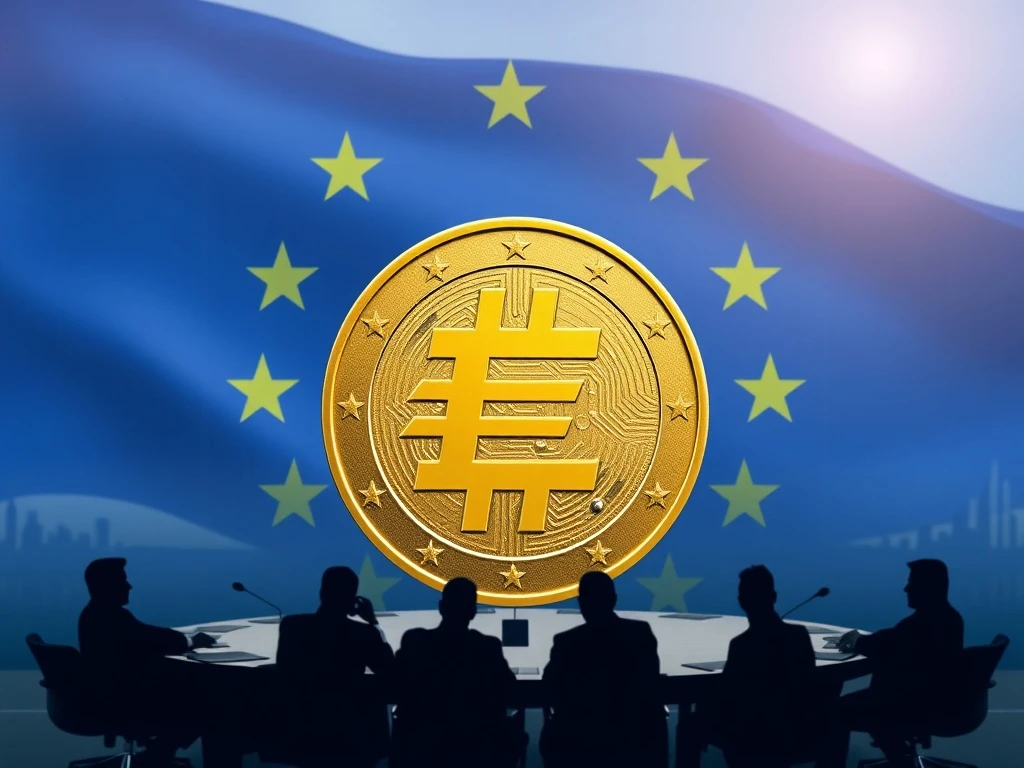Digital Euro: EU Finance Ministers Unanimously Agree on Crucial Holding Limits

The financial landscape of Europe is undergoing a significant transformation. Recently, **EU finance ministers** reached a pivotal consensus. This agreement directly impacts the future of the **Digital Euro**, particularly regarding how much individuals can hold. For anyone following the evolution of central bank digital currencies (CBDCs) and their potential impact on privacy and financial control, this development is crucial. Indeed, the decision marks a substantial step forward for the bloc’s proposed digital currency.
EU Finance Ministers Shape the Future of the Digital Euro
On Friday, European Union finance ministers announced a clear pathway. They agreed to establish **holding limits** for the **Digital Euro**. This decision emerged from the latest Eurogroup meeting, following the Economic and Financial Affairs Council gathering in Copenhagen, Denmark. Officials confirmed a consensus on the “ceiling for holding limits and then ultimately on the issuance process itself for the digital euro.” Importantly, discussions focused on the *procedures* for setting these limits, not the specific caps themselves. This distinction is vital for understanding the current stage of development. Furthermore, this move brings the EU closer to launching its own central bank digital currency, a significant milestone in global finance.
Understanding Digital Euro Holding Limits
The concept of **holding limits** for a **Digital Euro** is not new. In fact, it has been a point of extensive discussion. Such limits aim to prevent potential financial instability, for instance, large-scale withdrawals from commercial banks. The **European Central Bank** (ECB) addressed these limits in its progress report on the digital euro, released at the end of 2024. Reportedly, these caps have caused some disagreement between the ECB and national central banks. Moreover, similar proposals for stablecoin limits have drawn criticism from cryptocurrency advocacy groups in the United Kingdom. Therefore, establishing clear and fair limits remains a complex challenge. Ultimately, these limits will help ensure the digital euro complements existing financial systems without disrupting them.
The European Central Bank’s Vision for CBDC
Despite a global trend towards stablecoins, the EU remains committed to its **Digital Euro** project. The **European Central Bank** has actively renewed its efforts to issue this digital currency. Piero Cipollone, an ECB board member, emphasized the system’s goals. He stated it “will ensure that all Europeans can pay at all times with a free, universally accepted digital means of payment, even in case of major disruptions.” This highlights the focus on resilience and accessibility. Furthermore, the ECB aims to protect user privacy. Cipollone claimed the bank “will not know anything about the payer and the payee.” This assurance directly addresses a key concern among potential users. The system will also work offline, enhancing its utility and privacy features. He noted this offline implementation “will be as good as cash in terms of preserving the privacy of the people.”
Addressing Stablecoin Competition with the Digital Euro
The rapid rise of dollar-based stablecoins presents a strategic challenge for the EU. Consequently, **ECB** policymakers have explored the **Digital Euro** as a crucial response. In late July, ECB adviser Jürgen Schaaf suggested deploying the digital euro as one of the strategic options. This approach directly counters the increasing influence of foreign-backed digital assets. Similarly, former ECB official Fabio Panetta advocated for the digital euro. He viewed it as a key tool for mitigating risks associated with growing cryptocurrency adoption. Panetta wisely observed, “We would be remiss to think that the evolution of crypto-assets can be controlled only through rules and restrictions.” Thus, the digital euro represents a proactive, competitive strategy. It aims to offer a robust, European alternative in the evolving digital payment landscape.
Privacy and Offline Payments: Key CBDC Concerns
Concerns over privacy and functionality often arise with new digital currencies. However, the **Digital Euro** project directly addresses these points. The ECB has made strong commitments regarding user privacy. They aim to replicate the anonymity of cash for offline transactions. This feature is particularly important for building public trust. Imagine paying without an internet connection, with your transaction details remaining private. Such a capability significantly enhances the appeal of a **CBDC**. It provides a secure and reliable payment method, even during major network outages. Therefore, these features are central to the digital euro’s design. They seek to balance innovation with fundamental user rights and expectations. The EU’s journey towards a digital euro continues, with these crucial agreements paving the way.







